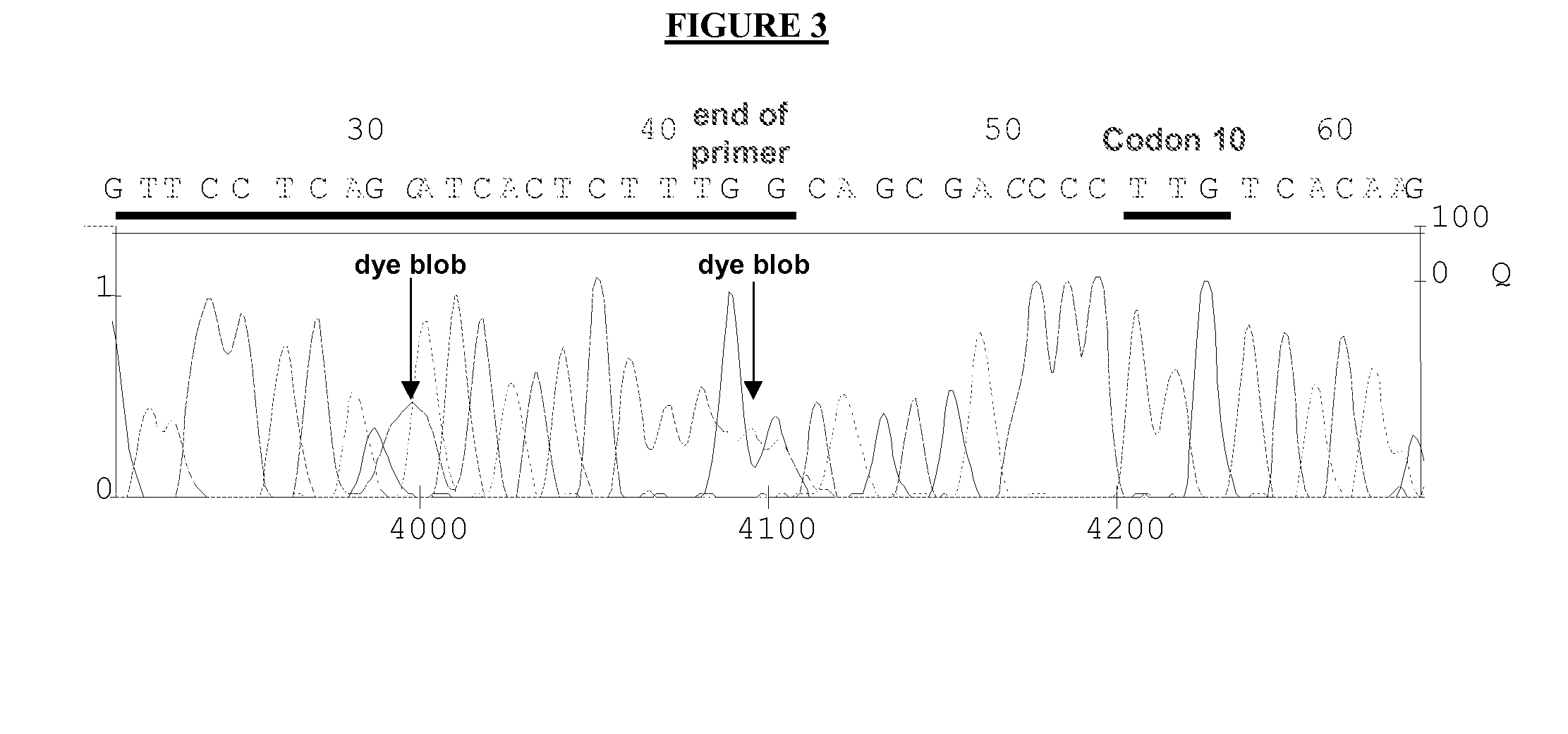Novel Oligonucleotide Primers and Methods for DNA Replication
a technology of oligonucleotide primers and dna, which is applied in the field of dna synthesis using nucleic acid primers, can solve the problems of significant problems, unable to use template-specific primers, and lack of bi-directional confirmatory sequences, so as to improve the sequencing accuracy of nucleotide sequences
- Summary
- Abstract
- Description
- Claims
- Application Information
AI Technical Summary
Benefits of technology
Problems solved by technology
Method used
Image
Examples
specific embodiments of invention
[0059]In one aspect, the present invention relates to oligonucleotide primers comprising a 3′ target-specific sequence corresponding to a target region on the polynucleotide template linked to a 5′ extension sequence. In another aspect, the invention relates to oligonucleotide primers comprising a 5′ universal sequence, a 3′ target-specific primer sequence corresponding to a target region on the polynucleotide template, and an extension sequence linking the universal sequence and the target-specific primer sequence.
[0060]The present invention also relates to methods that utilize the above novel oligonucleotide primers to initiate polymerase-catalyzed DNA synthesis at a target region on a polynucleotide template. In one aspect, the methods comprising the steps of (1) providing a polynucleotide template having refractory region upstream of a target region; (2) hybridizing to the polynucleotide template an oligonucleotide primer comprising a 5′ extension sequence linked to a 3′ target-...
example 1
Design of Universal Extension Primer to Sequence L10 Codon of HIV Protease Gene
[0093]The methods and primers of the present invention are illustrated in the following example. The objective of the experiments described below was to develop a sequencing-based HIV genotyping assay that could generate bidirectional sequence for codon L 10 of the HIV protease gag gene in all samples. The L 10 codon is located downstream (within approximately 30 bases) of a highly polymorphic region characterized by mixed insertion / deletion mutations.
[0094]Conventional primer design rules and programs place primer sequences located either upstream or downstream of this variable region. Because approximately 5-15% of patients are infected with multiple quasi-species of HIV, one with the gag ins / del mutation and one without, use of upstream primers results in synthesis of a mixture of sequencing templates that cannot be interpreted beyond the point of polymorphism. In order to avoid this problem, existing ...
example 3
Generation of Sequencing Templates
[0098]The primers described above in Table 2 were tested with RT-PCR products obtained from cultured HIV virus particles (ACCUTYPE samples from BBI) and clinical samples. RT-PCR products were prepared from ACCUTYPE samples that had been diluted with basepool from 106 to 250 copies per ML prior to extraction. Multiple samples of HIV subtypes A, B, C, G, and CRF02_AG were tested at all dilutions. Agarose gel analysis of sequencing templates generated with RR076 and RR078 showed that PCR products amplified with RR076 and RR078 were 904 bp.
[0099]Three different ACCUTYPE samples of subtypes D, F, and CRF01_AE were also tested at 5000 copies per mL and the resulting sequencing templates generated with RR076 and RR078 were analyzed by agarose gel electrophoresis.
[0100]The RR076 and RR078 primers also were evaluated using RT-PCR products obtained from an in-house panel of 23 clinical samples. The eight HIV subtypes covered by the ACCUTYPE samples above were...
PUM
| Property | Measurement | Unit |
|---|---|---|
| Volume | aaaaa | aaaaa |
| Volume | aaaaa | aaaaa |
| Volume | aaaaa | aaaaa |
Abstract
Description
Claims
Application Information
 Login to View More
Login to View More - R&D
- Intellectual Property
- Life Sciences
- Materials
- Tech Scout
- Unparalleled Data Quality
- Higher Quality Content
- 60% Fewer Hallucinations
Browse by: Latest US Patents, China's latest patents, Technical Efficacy Thesaurus, Application Domain, Technology Topic, Popular Technical Reports.
© 2025 PatSnap. All rights reserved.Legal|Privacy policy|Modern Slavery Act Transparency Statement|Sitemap|About US| Contact US: help@patsnap.com



